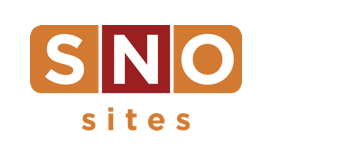The SNO Report: Best practices for using Google Analytics
Step into most professional newsrooms and you’ll find someone spending their days dissecting web traffic. Maybe it’s the general manager or an editor. It’s sometimes someone hired specifically to track and conceptualize uses for that data.
Who’s that person in your newsroom?
Finding the gold mine of information is as easy as logging in to your site’s dashboard and clicking on the “SNO Analytics” tab near the top of the toolbar on the left. There, you’ll find all of the most relevant Google Analytics data for your everyday Curious George: How many people visited today? What were they reading? There’s so much more info available to you if you select the “Google Analytics Access” tab on the screen. Ladies and gents, this is your pathway to the mothership.
On Google’s analytics dashboard, not the condensed SNO version, you’ll find a massive knowledgebase of information about your readers, from what town they were in when they visited your website to what shampoo they use during their morning routine. (Which one’s the lie?)
To do anything with that data, you have to know what you’re seeing and why it matters. Audience, Acquisition, and Behavior will be your three main categories of information there. Here’s what you need to know about them:
1. Audience
This is the first of three main data points you’ll find. It’s all about getting the general scope of your readers. These numbers are your most directly helpful stats, like how many readers there were today and what they were reading. Try this: It’s guaranteed to perk up your staff when you pass along this information. “Today’s top story was written by (insert name here). Way to go!”
2. Acquisition
Acquisition details how readers are getting to your site, in one of four ways. There’s Direct Traffic, meaning word of your site has spread so well that people are going directly to your URL for their news. Next, there’s Organic Search, in which readers know about you but not enough to know your URL — so they Google you. There’s Referral, meaning some other website linked to yours. Finally, there’s Social Media, which is exactly what it sounds like.
3. Behavior
There is some overlap between Audience and Behavior — both will tell you what the audience is reading while on your site, for example. But Behavior is more than that.
Analyzing your readers’ behavior helps you understand them and that’s the key. What are they reading, or, rather, what are they looking for? (“We shouldn’t have ignored the PTA.”) Which of our sections, or categories, is most popular? (“We need to write more sports stories.”) What time are readers coming to your site? (“Let’s start scheduling stories to publish at 4 p.m.”)
It’s simple: Knowing your analytics help you know your audience, and knowing your audience helps you get even more of one. Develop good habits in checking your analytics, use the info and watch your traffic rise.
